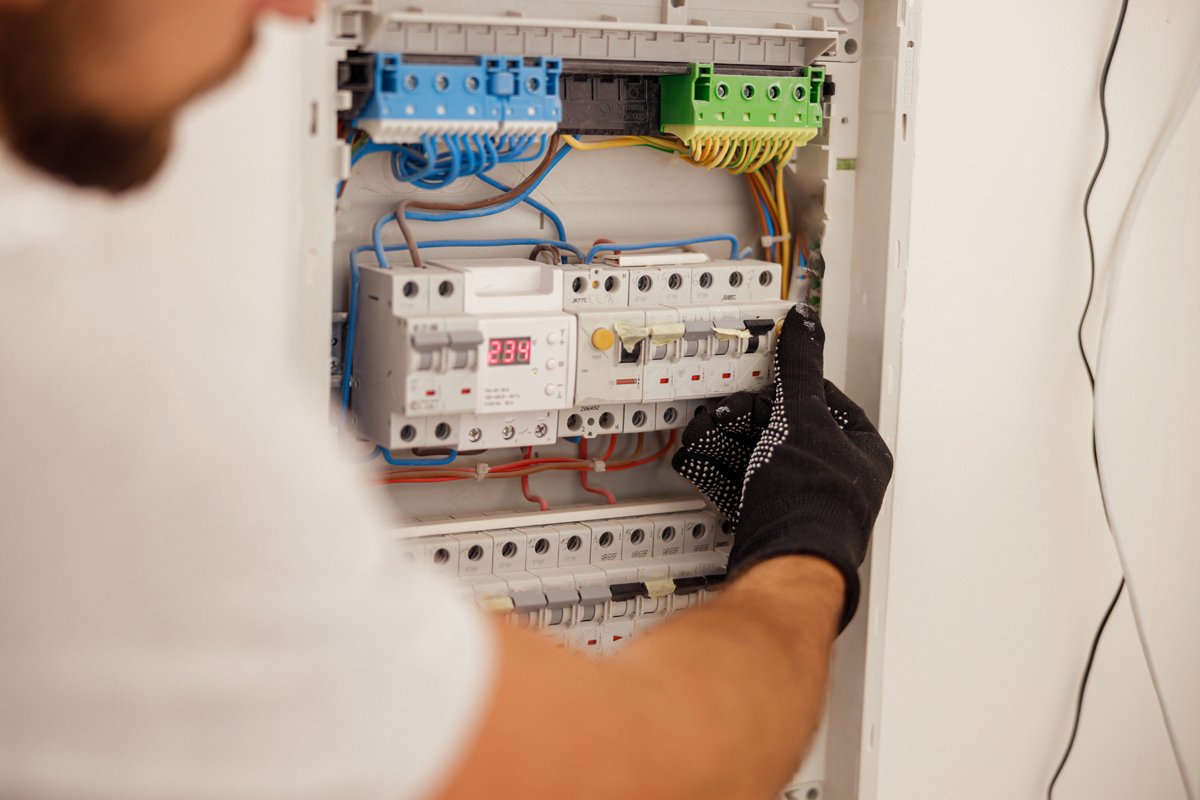Since circuit breakers are essentially the control center of your electrical system, it’s very important to know how to test these breakers. Use this guide to test a circuit breaker using a multimeter.
What Is A Circuit Breaker?
Circuit breakers are responsible for regulating how much electricity is flowing to a specific power source, such as outlets or appliances. In the event a circuit is overloaded, it will simply shut itself off to prevent any serious electrical/safety issues.
Circuit breaker switches look like heavy-duty, sideways light switches. The switch will be securely in the “ON” position when the breaker is functioning properly. Whenever the breaker trips, the switch will be out of place toward the panel’s middle area.
Why Test A Circuit Breaker?
The circuit breaker plays a vital role in managing your electrical supply. The electricity coming to your building will be divided into multiple circuits, with each one connected to the breaker.
Your circuit breaker is an automated switch which interrupts the electrical flow if there is an overload or a short circuit. If you reset the breaker in this scenario and the power does not return, there could be an issue with your electrical panel.
Testing the breaker with a multimeter will allow you to determine the flow of electricity within the panel. Multimeters are instruments used to measure amps, volts, and ohms.
How To Test Your Circuit Breaker With A Multimeter
Before starting any work on your circuit breaker, ensure all appliances are unplugged and all lights are turned off that are powered through this particular breaker. Then, put on a pair of rubber-soled shoes and safety gloves. Make sure the surrounding area is dry before testing the circuit breaker.
Follow these steps:
- Open the circuit breaker box and find the breaker you wish to test. Each breaker will be tied to a specific circuit in your building.
- Unscrew the metal frame surrounding the breakers to access the wires running through the breakers.
- Flip on the multimeter and set it to “volts AC”. DC, the alternative, is used to test battery-powered devices.
- The multimeter features two prongs. Touch one prong to the circuit breaker’s terminal screw and touch the other prong to a ground screw.
- The ground screw is typically a metal bar along the right side of the circuit box.
- Your multimeter should read between 120-240 volts.
- Any other number ultimately indicates a faulty circuit breaker.
SHIELD’S ELECTRIC IN TEMPE, ARIZONA
Family owned and operated since 1957, Shields Electric, Inc. is one of Arizona’s most experienced electrical contractors. Our commercial, residential and institutional clients benefit from our decades of experience in a wide range of market segments and project types throughout the state of Arizona. Contact us today for a free quote!












